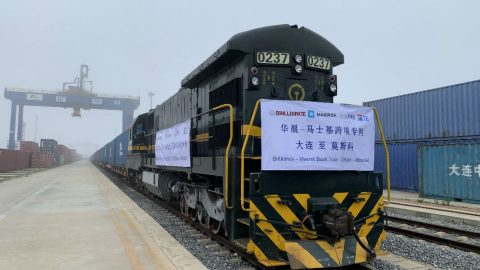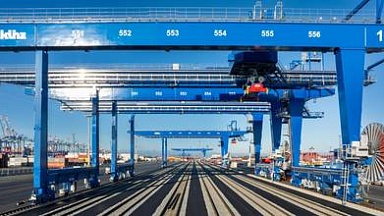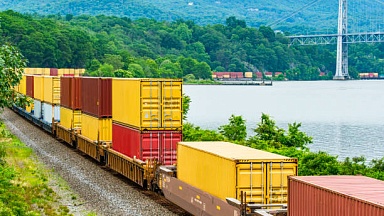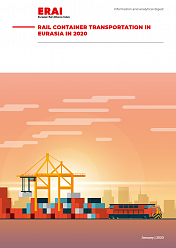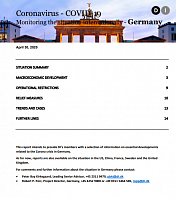«This only impacts the business for a short period», says Wanxu Dong, Managing Director of the Chinese railway undertaking. «It is believed that the quantity of CR Express will soon restore back to normal when Chinese factories resume their business.» An in exclusive interview with RailFreight.com, he shares his view and expectations about rail between Europe and Asia.
4025 trains
Founded in 2010, Beijing Trans Eurasia International (BTE) has always been specialised in Eurasian intermodal rail freight. The company mainly renders railway transportation services, from China to Central Asia, Russia and Europe, to logistics companies and freight forwarders.
From something that started in 2008 as trial of rail transportation between Beijing and Hamburg, the total of 4025 blocktrains that made the journey in 2019 is an impressive figure. If you also take into account train journeys between China and Russia, this number is even doubled to 8000 trips. In TEUs, last year ended with the figure 370.000; the same amount as in 2018. But there were other achievements.
Transit time
"The transit time has decreased from the previous 18 days to the present 12-14 days, and we believe that would not have been possible without the efforts of customs authorities, railway companies and partners along the routes. They are consecutively optimising the organisation of transportation as well as accelerating customs clearance at the border, which greatly shortened the total transit time.
«The speed of customs clearance at Dostyk and Malaszewicze, where the train crosses from China into Kazakhstan and Belarus into Poland respectively, is much better than before, Dong says. «As far as I know, China Railway and customs are working together with railway companies and customs along the routes on the projects of electronic data interchange. In the future, the cargo information will be sent to the border preceding the train’s arrival in order to save time.»
New routes
Just as the main border points are gaining efficiency, they are no longer the only options on the route between China and Europe. Partly because of the congestion that used to earmark the border crossing at Malaszewicze-Brest, operators were compelled to seek for new routes with ‘normal’ transit time. «With the development of China Rail Express, more and more railway operators like to take part in this and actively recommend new routes. We work together with them on the studies and trials of these new routes.
„Obviously, the most-used and most popular route is still the traditional one via Malaszewicze, where capacity is regarded to be at its best after all. Besides, due to the massive turnaround of block trains, the route reveals more flexibilities. BTE will continue to operate the ‘Mala route’, while at the same time promote the ‘Kaliningrad route’. This route shows its strength in a faster connection to the countries adjoining the Baltic Sea“.
Central and Eastern Europe
BTE has shown a strong focus on the Central and Eastern European (CEE) region. Together with Metrans, it has launched a connection between Xi’an and Ceska Trebova (Czech Republic) and Wuhan — Budapest (Hungary). These routes both have a lot of potential, Dong believes. These two hubs have pretty good rail networks to meet the logistics demand in the region.» But also the Polish hubs of Warsaw and Poznan could fulfill this role, he adds.
«Yes, we have a strong focus on Eastern Europe. This is because we are trying to bypass the fierce competition of Hamburg and Duisburg, to which many cities are connected by rail. As inland cities, hubs in Eastern Europe have more advantages in rail freight. Distribution from seaports to inland cities will be no longer be needed when a rail network is in place.
While seeing huge potential in the mentioned hubs, Dong also points to the promising role of SLavkov, located in the south of Poland. «It possesses the potential of becoming another rail hub. Freight trains coming in via the route to Slavkov are operated on the broad gauge line, which means that the gauge switch can be avoided. This saves a lot of time. After arrival, containers could quickly be distributed to other CEE countries by truck.» On all other routes the broad gauge line extend till the border with the EU and trains are bound to be transhipped onto the narrow gauge of the European railway network.
Germany on top
Although BTE sees great potential in the CEE region, it still considers Germany as the main destination on the New Silk Road. «Volumes to Germany will not be affected. After all, Germany has a powerful economy», says Dong. Similarly, Duisburg is likely to remain the largest hub on the route, he believes. «This is because it is located in Ruhr Industrial Region, where railway transportation is of great demand.
«It also contains an excellent network for rail, land, and water transportation, which covers a good spectrum of nearby countries. In addition, Duisport is currently under construction for the expansion of its railway terminals, in order to provide more capacity in the future.»
Chinese hubs
In China, BTE mainly serves the cities of Xi’an, Wuhan and Xiamen. These three cities are respectively located in the western, middle and southern part of China. «Xi’an mainly serves the northern and western part of China, e.g. Shaanxi, Shanxi, Beijing and Tianjin. Commodities are usually textiles and electronics. Wuhan mainly serves the middle and eastern part of China, e.g. Shanghai, Jiangsu and Zhejiang, Hubei. Commodities are usually automobile accessories and fashion.»
Finally, Xiamen mainly serves the southern part of China, e.g. Guangzhou and Shenzhen. Commodities are usually textiles and electronics. Although this city is located directly on the Chinese east coast, rail is a popular option here. «It is the advantage of rail that counts», says Dong. «In spite of the well-developed sea shipping industry in Xiamen, rail freight takes approximately 15 days to arrive at the markets of Poland and Germany.»
Getting better
The competition with other modalities remains an area of concern for rail freight along the Eurasian corridor. «As is known to all, railway transportation requires more customers than sea and air freight. We are developing our own collaborative system with the purpose of eliminating repetitive work and improving the promptness of information transmission and processing.
«Improvements need to be done continuously and in all areas of of our business. There is not just „that one“ thing which need improvement. Transit time will continue to decrease in the future, as well as the overall performance. Consistent finetuning is necessary.»
